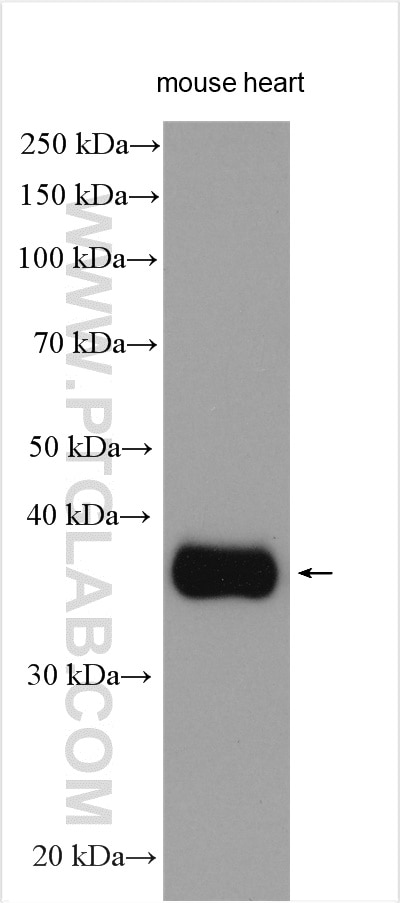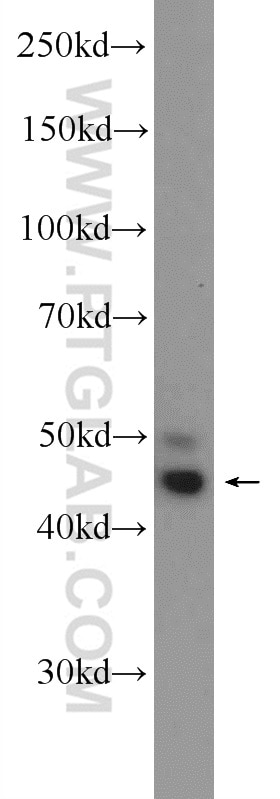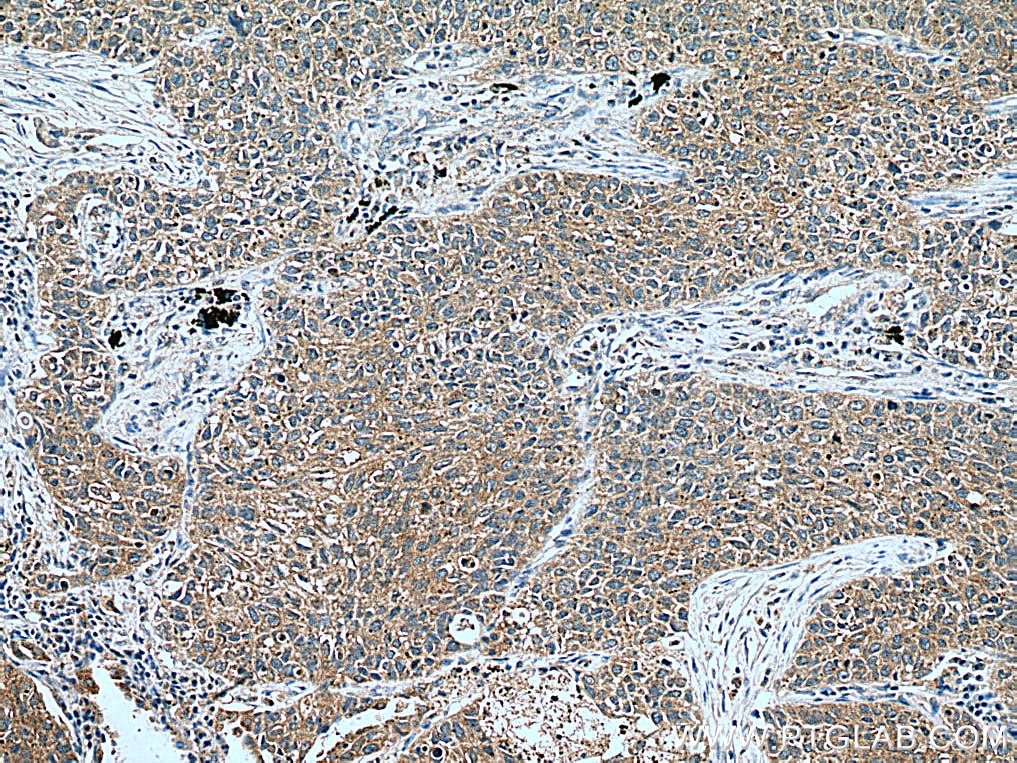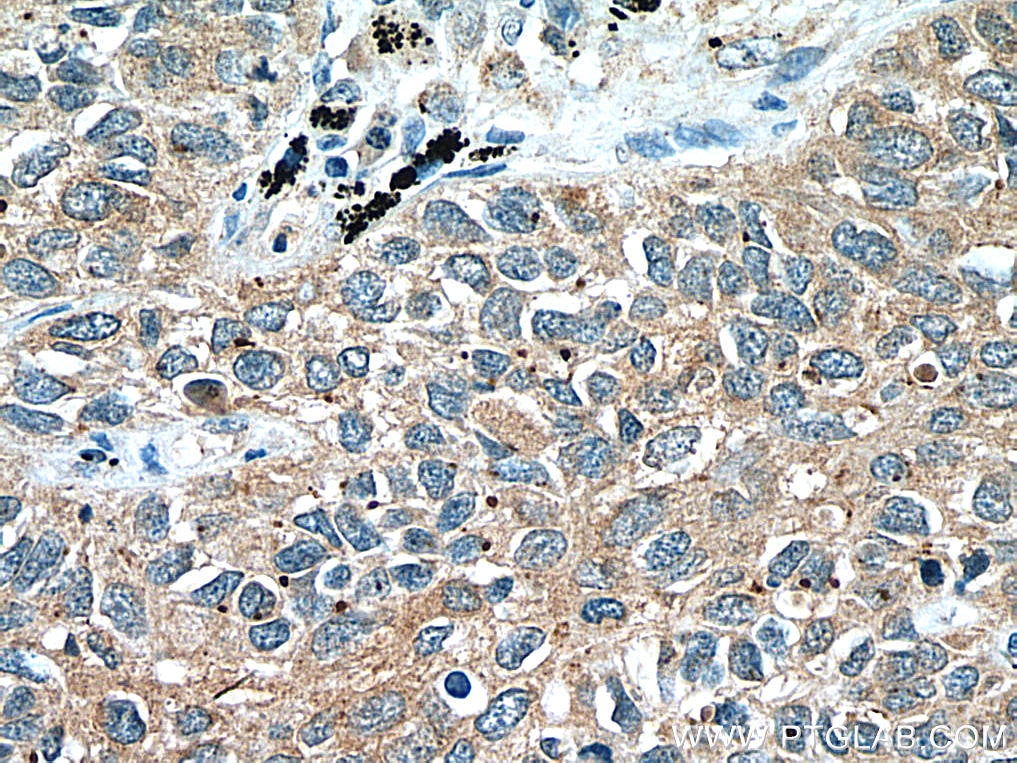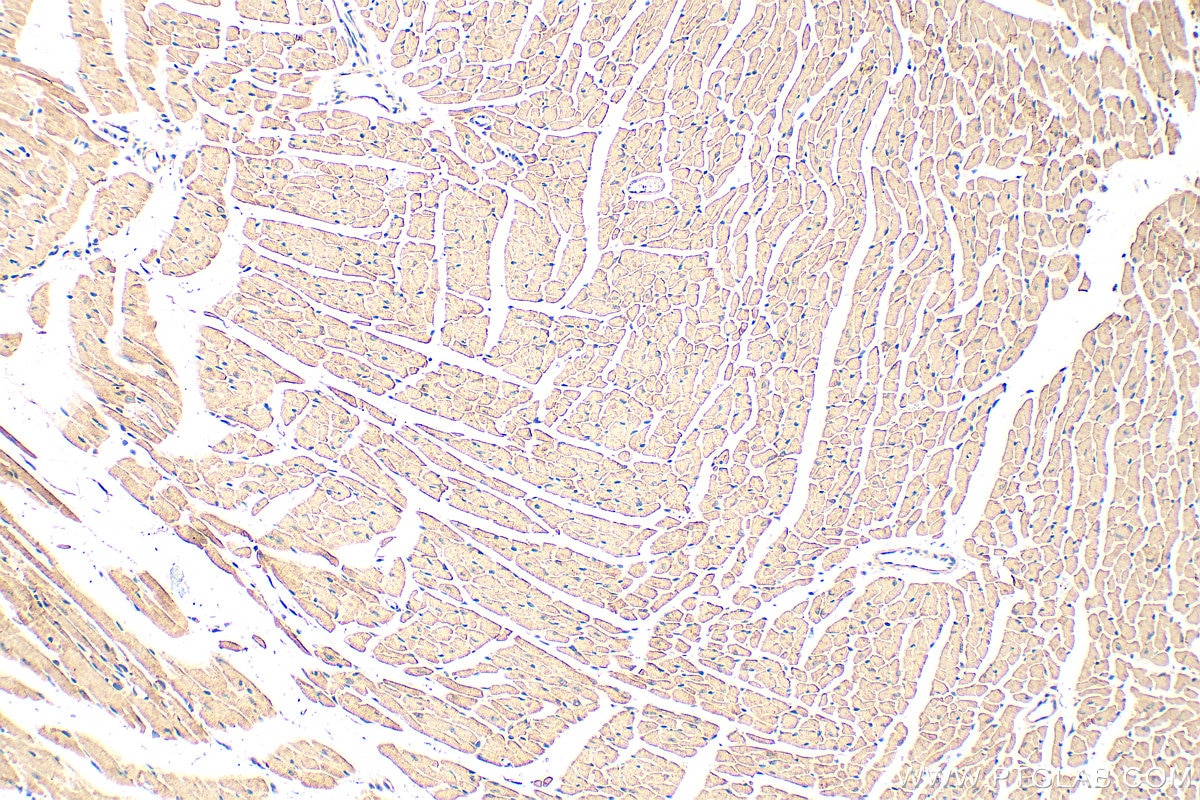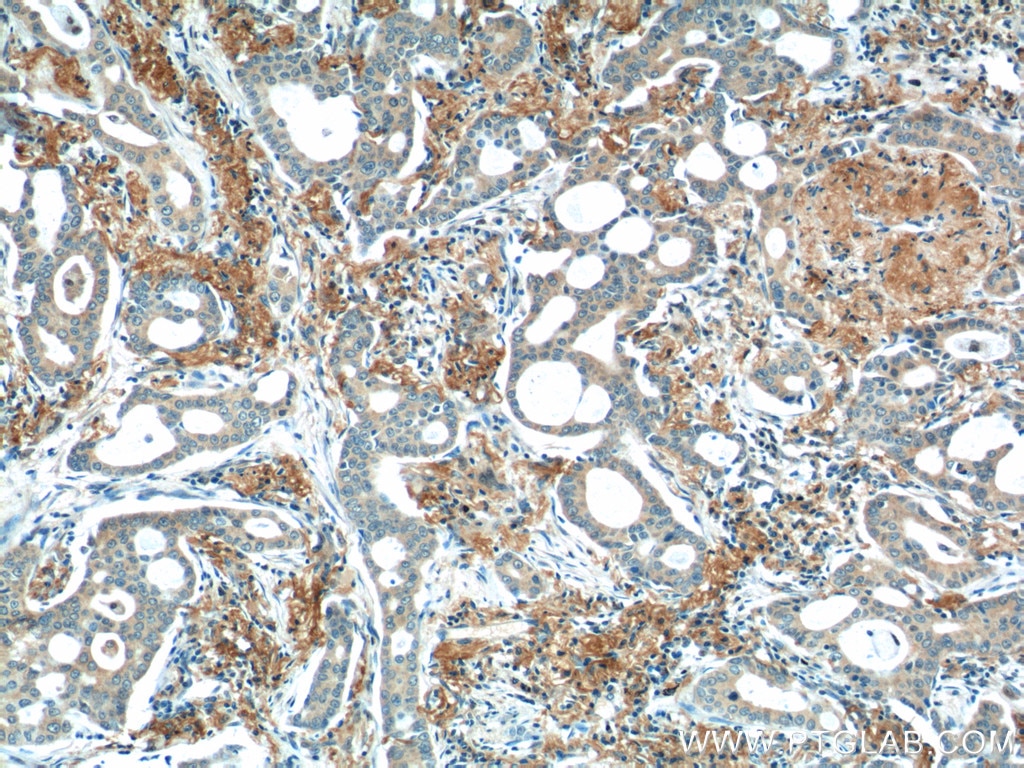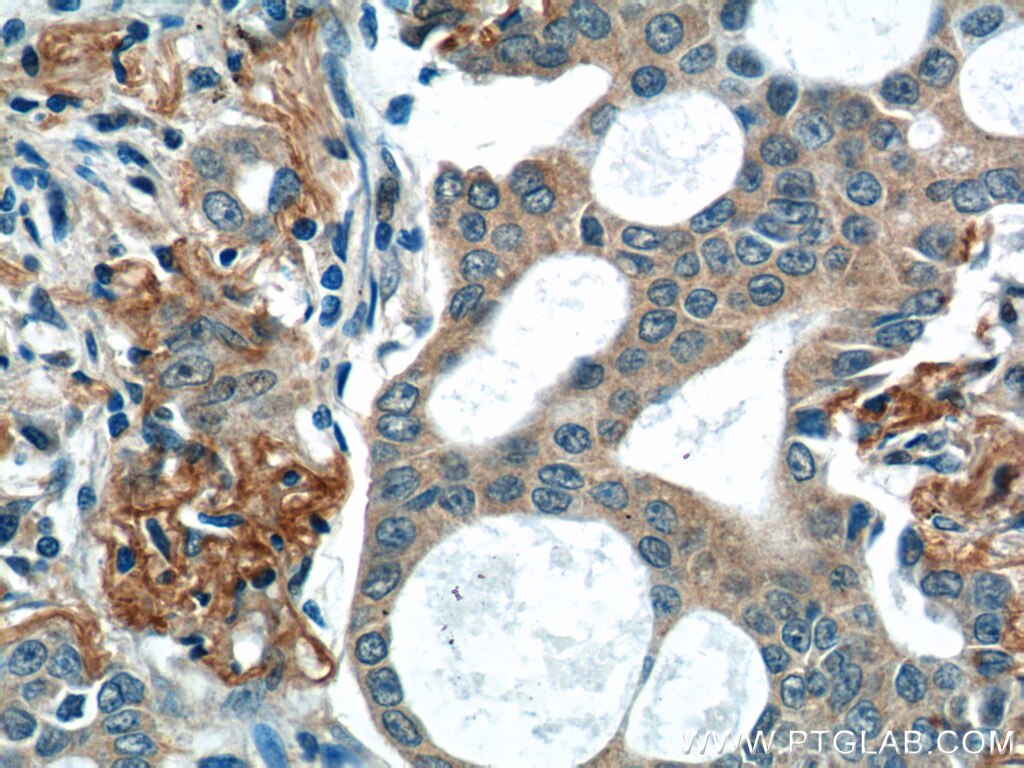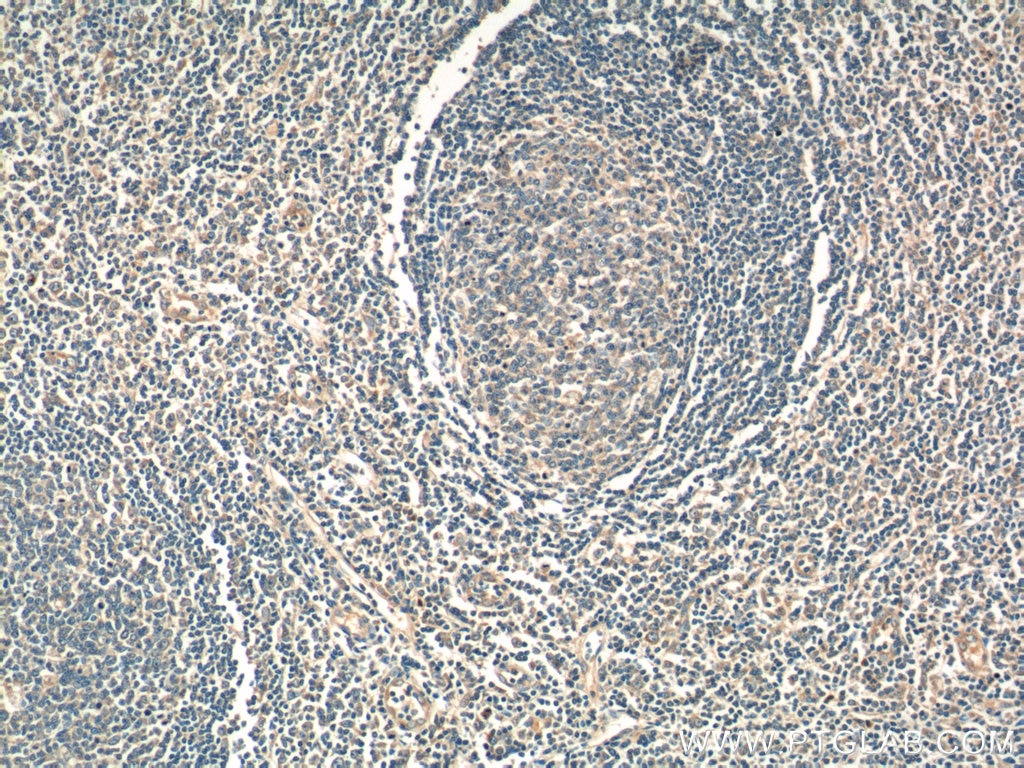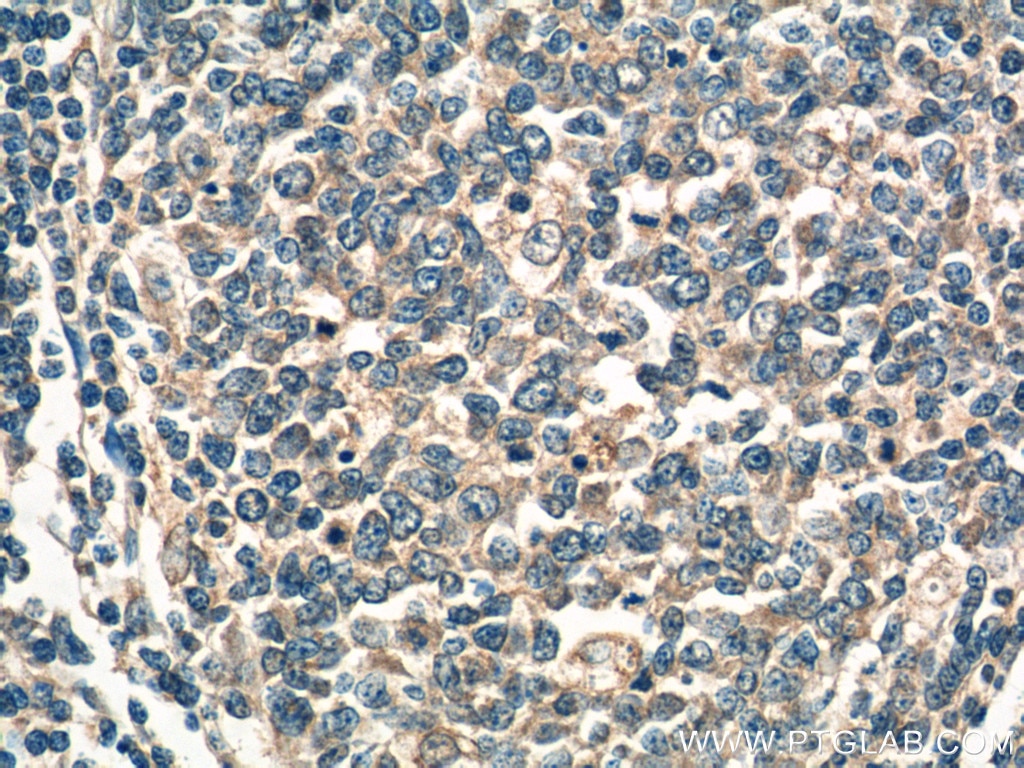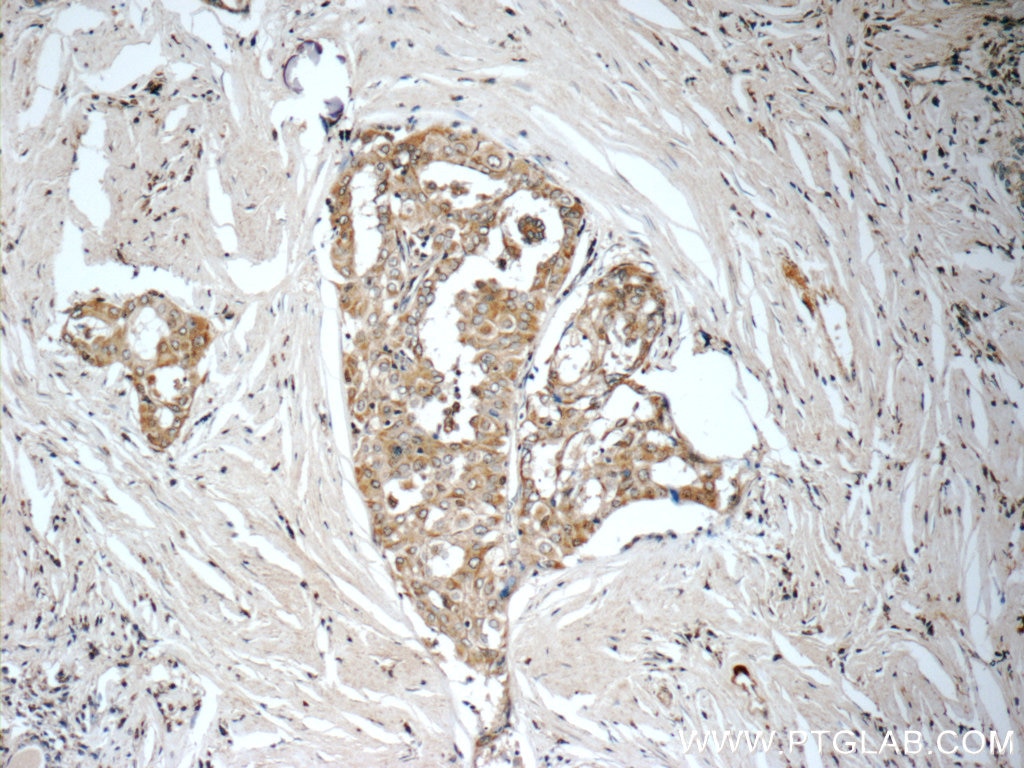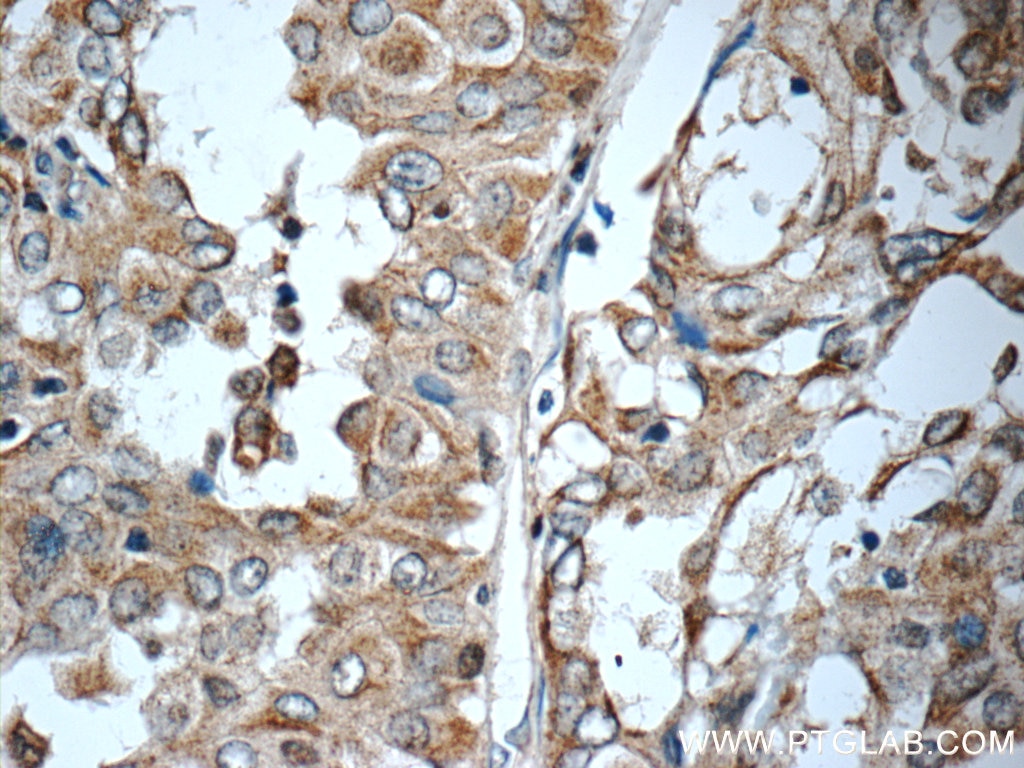- Phare
- Validé par KD/KO
Anticorps Polyclonal de lapin anti-WNT5A/B
WNT5A/B Polyclonal Antibody for WB, IHC, ELISA
Hôte / Isotype
Lapin / IgG
Réactivité testée
Humain, souris et plus (3)
Applications
WB, IHC, IF, IP, RIP, ELISA
Conjugaison
Non conjugué
N° de cat : 55184-1-AP
Synonymes
Galerie de données de validation
Applications testées
| Résultats positifs en WB | tissu cardiaque de souris, cellules HUVEC, cellules PC-3 |
| Résultats positifs en IHC | tissu de cancer du poumon humain, tissu cardiaque de souris, tissu d'amygdalite humain, tissu de cancer de la thyroïde humain il est suggéré de démasquer l'antigène avec un tampon de TE buffer pH 9.0; (*) À défaut, 'le démasquage de l'antigène peut être 'effectué avec un tampon citrate pH 6,0. |
Dilution recommandée
| Application | Dilution |
|---|---|
| Western Blot (WB) | WB : 1:500-1:3000 |
| Immunohistochimie (IHC) | IHC : 1:200-1:500 |
| It is recommended that this reagent should be titrated in each testing system to obtain optimal results. | |
| Sample-dependent, check data in validation data gallery | |
Applications publiées
| KD/KO | See 2 publications below |
| WB | See 54 publications below |
| IHC | See 12 publications below |
| IF | See 17 publications below |
| IP | See 1 publications below |
| RIP | See 1 publications below |
Informations sur le produit
55184-1-AP cible WNT5A/B dans les applications de WB, IHC, IF, IP, RIP, ELISA et montre une réactivité avec des échantillons Humain, souris
| Réactivité | Humain, souris |
| Réactivité citée | rat, Humain, poisson-zèbre, poulet, souris |
| Hôte / Isotype | Lapin / IgG |
| Clonalité | Polyclonal |
| Type | Anticorps |
| Immunogène | Peptide |
| Nom complet | wingless-type MMTV integration site family, member 5A |
| Masse moléculaire calculée | 42 kDa |
| Poids moléculaire observé | 38 kDa |
| Numéro d’acquisition GenBank | NM_003392 |
| Symbole du gène | WNT5A |
| Identification du gène (NCBI) | 7474 |
| Conjugaison | Non conjugué |
| Forme | Liquide |
| Méthode de purification | Purification par affinité contre l'antigène |
| Tampon de stockage | PBS with 0.02% sodium azide and 50% glycerol |
| Conditions de stockage | Stocker à -20°C. Stable pendant un an après l'expédition. L'aliquotage n'est pas nécessaire pour le stockage à -20oC Les 20ul contiennent 0,1% de BSA. |
Informations générales
The WNT gene family consists of structurally related genes which encode secreted signaling proteins. There are 19 Wnt genes in the human genome that encode functionally distinct Wnt proteins. These proteins have been implicated in oncogenesis and in several developmental processes, including regulation of cell fate and patterning during embryogenesis. Wnt members bind to the Frizzled family of seven-pass transmembrane proteins and activate several signaling pathway. Wnt5A is a member of the Wnt family of proteins, which are 38-45 kDa secreted cysteine-rich proteins with hydrophobic signal peptides. This antibody can recognize WNT5A and WNT5B.
Protocole
| Product Specific Protocols | |
|---|---|
| WB protocol for WNT5A/B antibody 55184-1-AP | Download protocol |
| IHC protocol for WNT5A/B antibody 55184-1-AP | Download protocol |
| Standard Protocols | |
|---|---|
| Click here to view our Standard Protocols |
Publications
| Species | Application | Title |
|---|---|---|
Cell Metab Mitochondrial Dynamics Is Critical for the Full Pluripotency and Embryonic Developmental Potential of Pluripotent Stem Cells. | ||
Genome Biol Integrated genomic and transcriptomic analysis reveals unique characteristics of hepatic metastases and pro-metastatic role of complement C1q in pancreatic ductal adenocarcinoma. | ||
Acta Biomater Substrate stiffness regulates differentiation of induced pluripotent stem cells into heart valve endothelial cells. | ||
Biomaterials Osteogenesis potential of different titania nanotubes in oxidative stress microenvironment. | ||
Nanoscale An assembly-inducing PDC enabling the efficient nuclear delivery of nucleic acid for cancer stem-like cell suppression | ||
Int J Biol Macromol Cranial repair-promoting effect of oxidised sodium alginate/amino gelatine injectable hydrogel loaded with deer antler blood peptides |
Avis
The reviews below have been submitted by verified Proteintech customers who received an incentive for providing their feedback.
FH Darin (Verified Customer) (11-02-2017) | No signal in lung epithelial cells from mice. However, it is possible that the protein is not expressed in lung epithelial cells.
|
